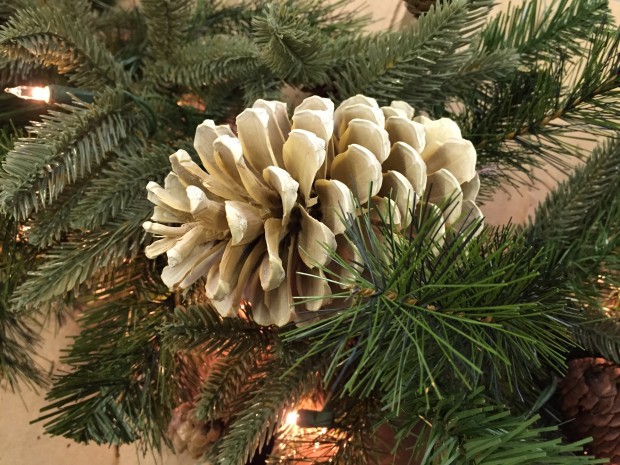 These bleached pine cones that so enchanted me this season sparked an interest in the cone world. Although pine cones are as familiar to me as the back of my hand, I realized that I did not know so much about them. These woody structures house the reproductive mechanism of a conifer. The female pine cones are large, and produce seeds. The male cones are small, produce lots of pollen, and eventually disappear once the pollen is dispersed. Of great interest to me is the fact that the identification of many pines revolves around the particulars of the cones they produce. The conifers existed on earth long before any flowering plant. These cones are considered the precursors of flowers. No wonder gardeners prize them.
These bleached pine cones that so enchanted me this season sparked an interest in the cone world. Although pine cones are as familiar to me as the back of my hand, I realized that I did not know so much about them. These woody structures house the reproductive mechanism of a conifer. The female pine cones are large, and produce seeds. The male cones are small, produce lots of pollen, and eventually disappear once the pollen is dispersed. Of great interest to me is the fact that the identification of many pines revolves around the particulars of the cones they produce. The conifers existed on earth long before any flowering plant. These cones are considered the precursors of flowers. No wonder gardeners prize them.
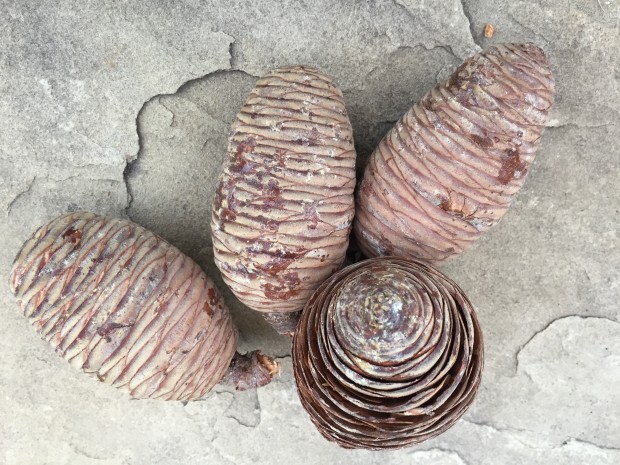 These cedar pine cones may have lived on a cedar through more than one season. It takes time for a cone to mature, and drop its seed. Once the cone has done has produced and dropped its seed, its biological directive has been fulfilled. The cones then drop to the ground. I spent some time today looking at these cones. I had never really taken the time to study on them them before. How incredibly beautiful they are.
These cedar pine cones may have lived on a cedar through more than one season. It takes time for a cone to mature, and drop its seed. Once the cone has done has produced and dropped its seed, its biological directive has been fulfilled. The cones then drop to the ground. I spent some time today looking at these cones. I had never really taken the time to study on them them before. How incredibly beautiful they are.
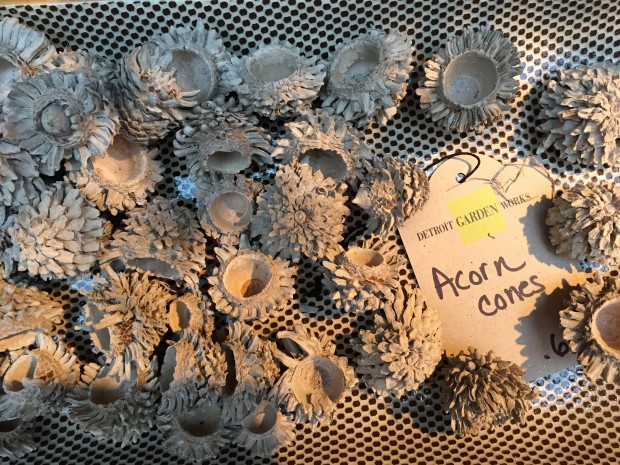 The oak acorn caps are not truly cones, but they share the woody and highly textured appearance of a pine cone. It was easy to like these acorn caps. Once the pine cones mature and drop, they are very persistent. A coulter pine produces the largest pine cones in the world. I have one that is over 20 years old. It has not deteriorated in the least bit. It is as heavy as a rock, and as architectural as the most beautiful building in the world.
The oak acorn caps are not truly cones, but they share the woody and highly textured appearance of a pine cone. It was easy to like these acorn caps. Once the pine cones mature and drop, they are very persistent. A coulter pine produces the largest pine cones in the world. I have one that is over 20 years old. It has not deteriorated in the least bit. It is as heavy as a rock, and as architectural as the most beautiful building in the world.
 How pine cones came to be associated with the holiday and the garden season’s end, I have no idea. But they have adorned many a wreath and garland. A bowl full of these ponderosa pine cones would be simply beautiful. We are able to purchase pine cones which have picks attached. This makes them easy to use in decorations. We also attach them via wire that is wrapped around the scales. Pine cones with tight scales-such as these cones-may need to be drilled. Having done this, I am amazed at how hard and dense their wood it. Plan for some drilling time.
How pine cones came to be associated with the holiday and the garden season’s end, I have no idea. But they have adorned many a wreath and garland. A bowl full of these ponderosa pine cones would be simply beautiful. We are able to purchase pine cones which have picks attached. This makes them easy to use in decorations. We also attach them via wire that is wrapped around the scales. Pine cones with tight scales-such as these cones-may need to be drilled. Having done this, I am amazed at how hard and dense their wood it. Plan for some drilling time.
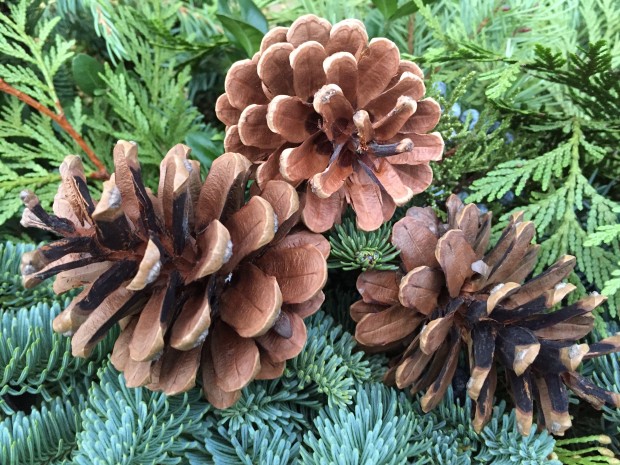 These cones are produced by pinus nigra. From the front, the scales are a rich cinnamon brown. From the side or back, the cones are black.
These cones are produced by pinus nigra. From the front, the scales are a rich cinnamon brown. From the side or back, the cones are black.
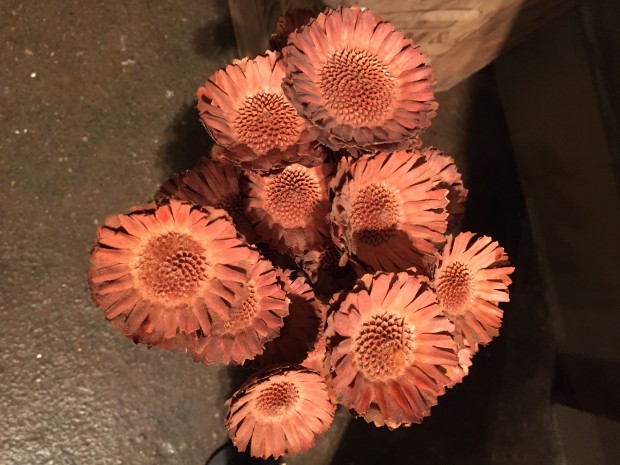 These dried “flowers” were made from the base of a pine cone.
These dried “flowers” were made from the base of a pine cone.
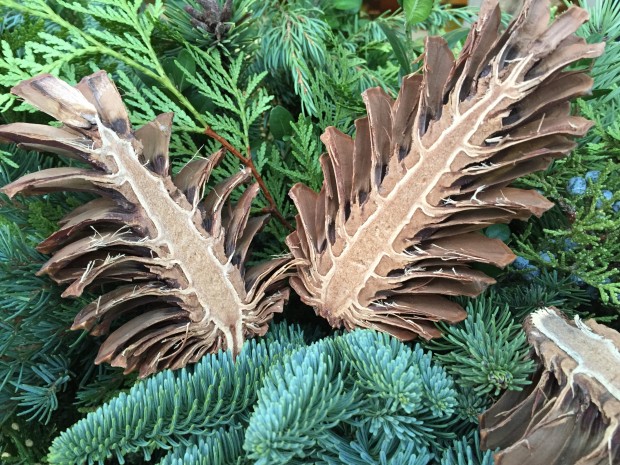 These half pine cones come from pinus maritima. Pine cones split in half are great for places where a full cone would be too wide. This picture of the split side illustrates the density and strength of the cone.
These half pine cones come from pinus maritima. Pine cones split in half are great for places where a full cone would be too wide. This picture of the split side illustrates the density and strength of the cone.
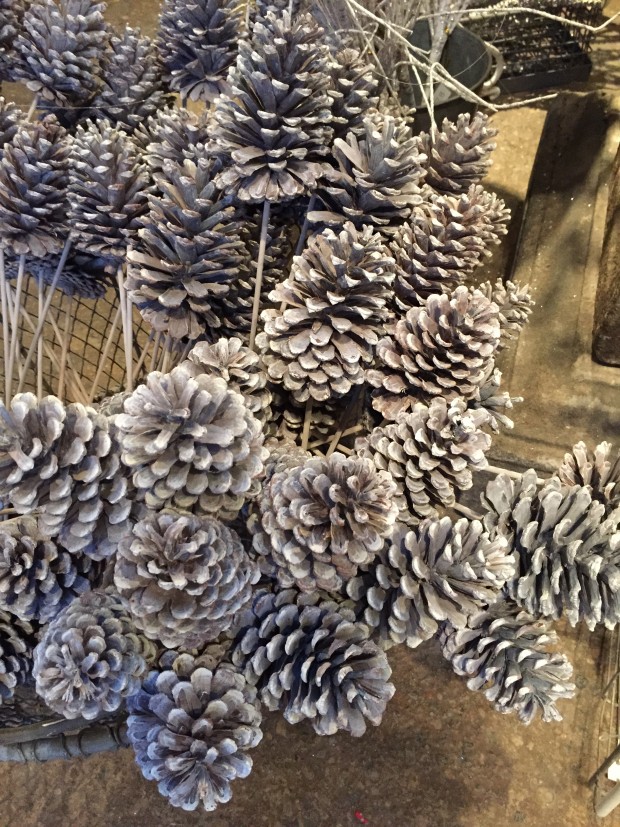 We carry many species of pine cones for the winter season. Some are native to our zone. Others come from places far away, and have that exotic look. These pine cones have had a gray wash applied to them. They can take paint as well as any piece of wood furniture.
We carry many species of pine cones for the winter season. Some are native to our zone. Others come from places far away, and have that exotic look. These pine cones have had a gray wash applied to them. They can take paint as well as any piece of wood furniture.
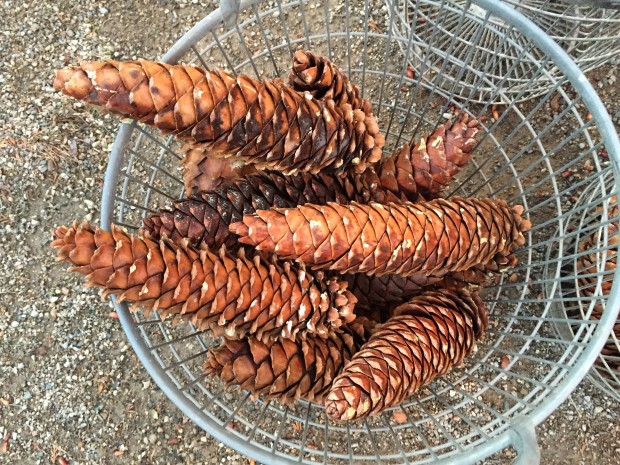 Sugar pine cones rank among the longest cones in the world. They regularly grow to 24″ long. Thy are sold by their length. The long cones are especially prized. The scales are tight, when they are fresh harvested. With age, those scales expand and flair out. A pine cone is a very familiar object indeed. But it is an enduring object whose appeal never fades.
Sugar pine cones rank among the longest cones in the world. They regularly grow to 24″ long. Thy are sold by their length. The long cones are especially prized. The scales are tight, when they are fresh harvested. With age, those scales expand and flair out. A pine cone is a very familiar object indeed. But it is an enduring object whose appeal never fades.
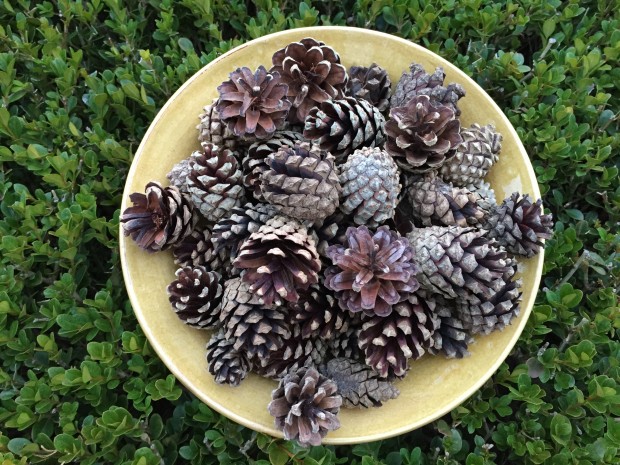 a bowl of cones from pinus sylvestris
a bowl of cones from pinus sylvestris
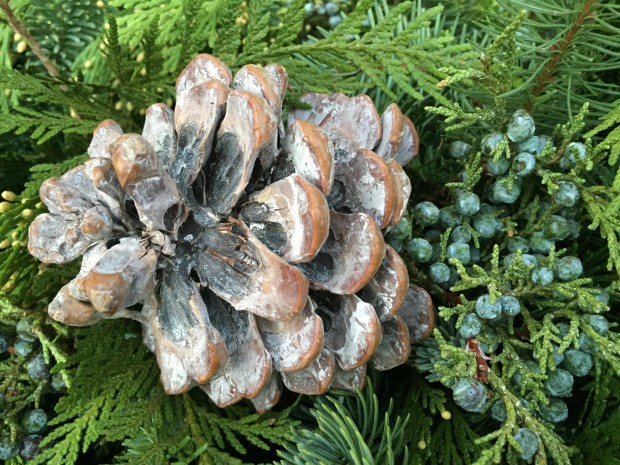 a cone whose species is unknown to me
a cone whose species is unknown to me
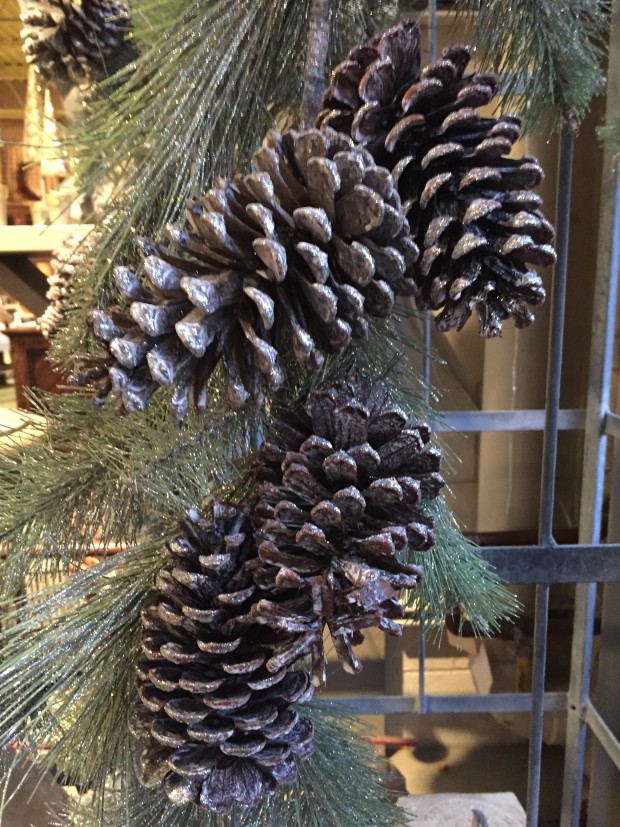 These natural cones have been attached to an artificial garland, and sprayed with sparkle. I feel sure that they will endure as long as the garland. As in just about forever. Just about forever-that surely describes every gardeners relationship with the natural world.
These natural cones have been attached to an artificial garland, and sprayed with sparkle. I feel sure that they will endure as long as the garland. As in just about forever. Just about forever-that surely describes every gardeners relationship with the natural world.
